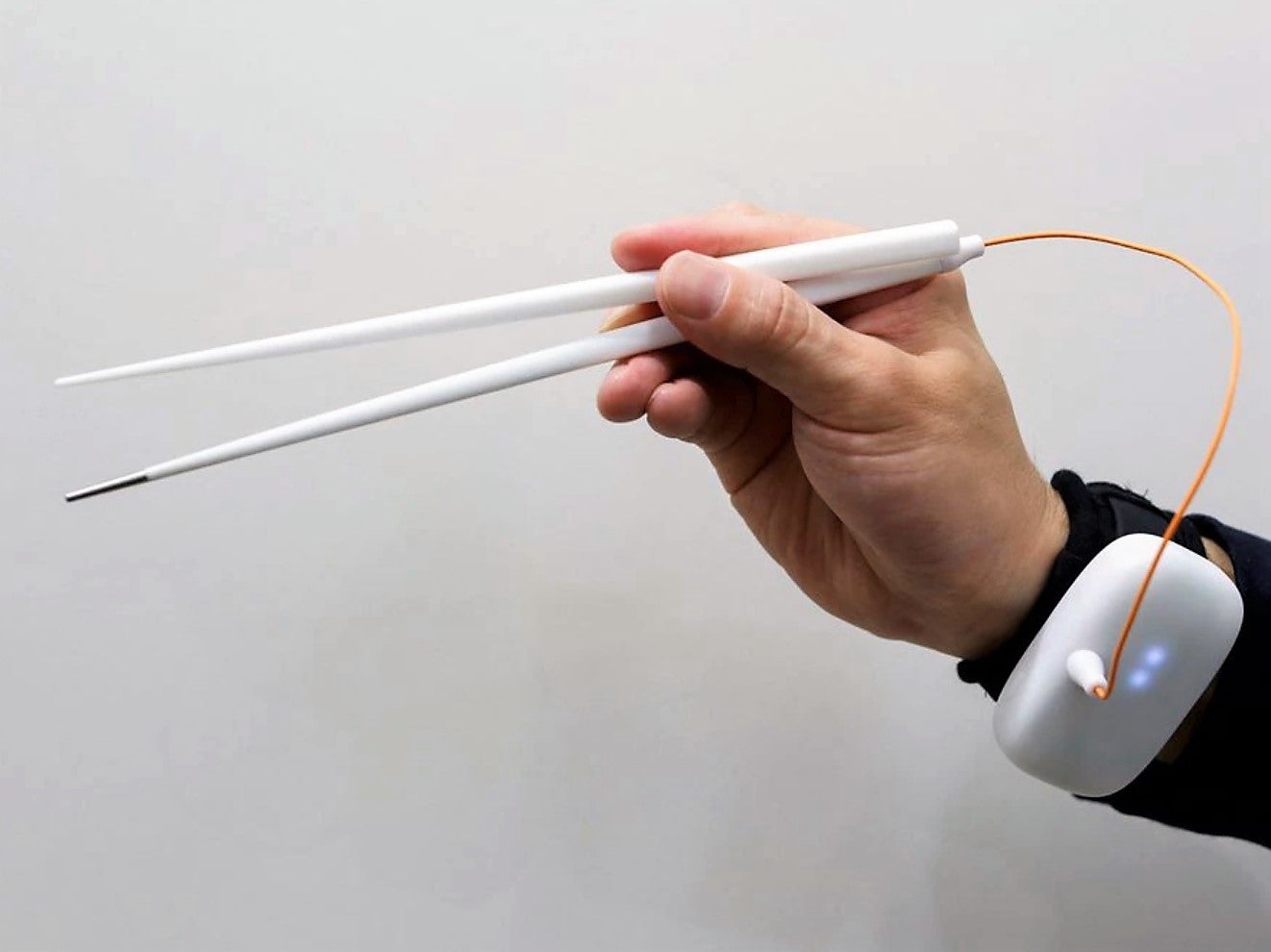Electric chopstick invention makes food taste more salty
High-tech chopsticks recreate salty flavours through electric currents sent to the tongue

Your support helps us to tell the story
From reproductive rights to climate change to Big Tech, The Independent is on the ground when the story is developing. Whether it's investigating the financials of Elon Musk's pro-Trump PAC or producing our latest documentary, 'The A Word', which shines a light on the American women fighting for reproductive rights, we know how important it is to parse out the facts from the messaging.
At such a critical moment in US history, we need reporters on the ground. Your donation allows us to keep sending journalists to speak to both sides of the story.
The Independent is trusted by Americans across the entire political spectrum. And unlike many other quality news outlets, we choose not to lock Americans out of our reporting and analysis with paywalls. We believe quality journalism should be available to everyone, paid for by those who can afford it.
Your support makes all the difference.Researchers in Japan have invented electric chopsticks that artificially create the taste of salt.
The high-tech chopsticks, co-developed by Meiki University and beverage maker Kirin Holdings, use electrical currents to enhance flavours, with the hope that they can be used to help reduce sodium levels in certain foods.
The chopsticks work through a wearable computer, which straps to a user’s wrist and connects to the chopsticks via a wire.
A weak electrical current then transmits sodium ions to the mouth in order to recreate salty flavours.
“As a result, the salty taste enhances 1.5 times,” Meiki University professor Homei Miyashita told Reuters.
Previous inventions to have come out of Professor Miyashita’s lab include a lickable TV screen that can imitate flavours.
They form part of an emerging product category that involve artificial taste technologies. In 2015, engineers at the National University of Singapore (NUS) developed a Taste+ device that delivers virtual taste sensations through electrical pulses to the tongue.
Working prototypes of a Taste+ cup and spoon demonstrated how sour, bitter and salty tastes could be generated through altering a dial.
The technologies can be used to both enhance the sense of taste, which diminishes as people get older, as well as improve the diets of people in countries where salt intake is too high.
High sodium diets can lead to health issues like high blood pressure and strokes, with the average Japanese adult consuming double the World Health Organisation’s recommended daily amount.
“To prevent these diseases, we need to reduce the amount of salt we take,” said Kirin researcher Ai Sato.
“If we try to avoid taking less salt in a conventional way, we would need to endure the pain of cutting our favourite food from our diet, or endure eating bland food.”
The team hope to transform the prototype into a commercial product as early as next year.

Join our commenting forum
Join thought-provoking conversations, follow other Independent readers and see their replies
Comments